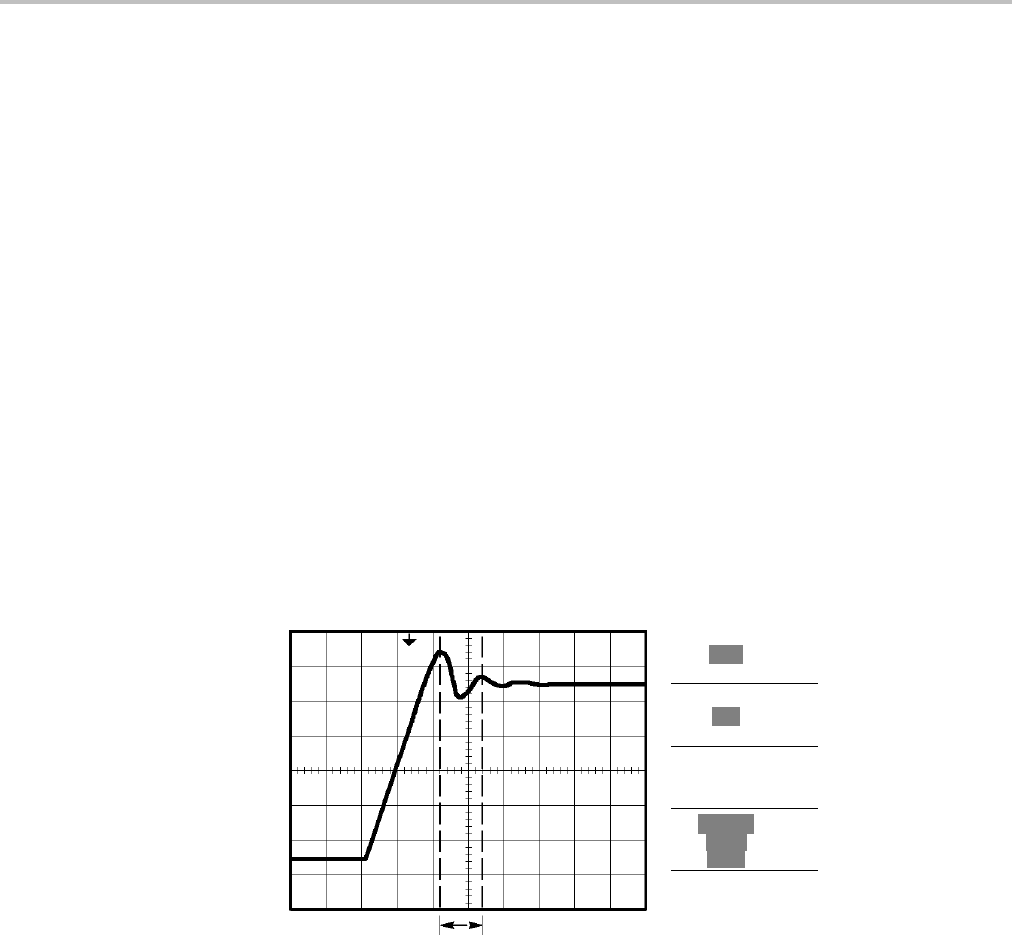User manual
Table Of Contents
- toc
- General safety summary
- Compliance Information
- Preface
- Getting Started
- Operating Basics
- Understanding Oscilloscope Functions
- Application Examples
- Taking Simple Measurements
- Using Autorange to Examine a Series of Test Points
- Taking Cursor Measurements
- Analyzing Signal Detail
- Capturing a Single-Shot Signal
- Measuring Propagation Delay
- Triggering on a Specific Pulse Width
- Triggering on a Video Signal
- Analyzing a Differential Communication Signal
- Viewing Impedance Changes in a Network
- Data Logging
- Limit Testing
- Math FFT
- USB Flash Drive and Device Ports
- USB Flash Drive Port
- File Management Conventions
- Saving and Recalling Files With a USB Flash Drive
- Using the Save Function of the Print Front Panel Button
- USB Device Port
- Installing the PC Communications Software on a PC
- Connecting to a PC
- Connecting to a GPIB System
- Command Entry
- Connecting to a Printer
- Printing a Screen Image
- Reference
- Appendix A: Specifications
- Appendix B: TPP0101 and TPP0201 Series 10X Passive Probes Inform
- Appendix C: Accessories
- Appendix D: Cleaning
- Appendix E: Default Setup
- Appendix F: Font Licenses

Application Examples
Taking Cursor
Measurements
You can use the cursors to quickly take time and amplitude measurements on
a waveform.
Measuring Ri
ng Frequency
and Amplitude
To measure the ring frequency at the r ising edge of a signal, follow these steps:
1. Push the Cursor button to see the Cursor Menu.
2. Push Type ► Time.
3. Push Sourc
e ► CH1.
4. Push the Cursor 1 option button.
5. Turn the multipurpose knob to place a cursor on the fi rst peak of the ring.
6. Push the Cursor 2 option button.
7. Turn the multipurpose knob to place a cursor on the second peak of the ring.
You can see the Δ (delta) time and frequency (the measured ring frequency)
in the Cursor Menu.
Type
Time
Source
CH1
Δt 540.0ns
1/Δt 1.852MHz
ΔV0.44V
Cursor1
180ns
1.40V
Cursor2
720ns
0.96V
8. Push Type ► Amplitude.
9. Push the Cursor 1 option button.
1
0.
T
urn the multipurpose knob to place a cursor on the first peak of the ring.
11. Push the Cursor 2 option button.
12. Turn the multipurpose knob to place Cursor 2 on the lowest part of the ring.
You can see the amplitude of the ring in the Cursor Menu.
36 TBS1000 Series Oscilloscopes User Manual










